Average age of onset of menopause. Understanding the Average Age of Menopause Onset and Its Implications
What is the average age at which natural menopause occurs? What are the key factors that influence the timing of menopause? How does the age of menopause onset impact a woman’s health and longevity?
The Timing of Natural Menopause Onset
The age at which natural menopause occurs varies among women, but the average age is around 51 years old. Several factors can influence the timing of menopause, including genetics, lifestyle, and underlying health conditions. Understanding the average age of menopause onset and the factors that contribute to its timing is important for women’s health and well-being.
Factors Influencing the Timing of Menopause
Research has identified several factors that can impact the age at which a woman experiences natural menopause:
- Genetics: Studies have shown that genetics play a significant role in the timing of menopause, with certain genetic variants associated with earlier or later onset.
- Lifestyle factors: Factors such as smoking, body mass index, and physical activity levels have been linked to the timing of menopause. For example, smokers tend to experience menopause earlier than non-smokers.
- Underlying health conditions: Certain medical conditions, such as autoimmune disorders or ovarian dysfunction, can also influence the timing of menopause.
The Impact of Menopause Timing on Health Outcomes
The age at which a woman experiences menopause can have important implications for her long-term health and longevity:

- Cardiovascular health: Early menopause has been associated with an increased risk of cardiovascular disease and mortality. Women who experience menopause at a younger age may have a shorter duration of exposure to the protective effects of endogenous estrogen.
- Bone health: Early menopause is a risk factor for osteoporosis and increased fracture risk later in life. The loss of estrogen during menopause can accelerate bone loss, making women with earlier menopause more vulnerable to these conditions.
- Cancer risk: The timing of menopause can also impact a woman’s risk of certain cancers, such as breast, ovarian, and endometrial cancer. Generally, earlier menopause is associated with a lower risk of these cancers.
The Relationship Between Menopause and Mortality
Several studies have examined the relationship between the age of natural menopause and overall mortality. The findings suggest that women who experience earlier menopause may have a higher risk of all-cause mortality, including mortality from cardiovascular disease and ischemic heart disease. This underscores the importance of understanding the timing of menopause and its potential impact on a woman’s health and lifespan.

Predicting the Onset of Menopause
While the average age of menopause onset is around 51 years, the actual timing can vary significantly among women. Factors such as genetics, lifestyle, and underlying health conditions can all play a role in determining when a woman will experience natural menopause. Understanding these factors can help healthcare providers and women better predict and plan for the onset of menopause.
Implications for Women’s Health and Well-being
The timing of menopause onset has important implications for a woman’s overall health and well-being. Women who experience earlier menopause may be at a higher risk of developing certain health conditions, such as cardiovascular disease and osteoporosis. Conversely, women who experience menopause at a later age may have a lower risk of these conditions. Healthcare providers should consider the timing of menopause when evaluating a woman’s health and developing appropriate management strategies.
Conclusion
In conclusion, the timing of natural menopause onset is a significant factor in a woman’s overall health and longevity. Understanding the average age of menopause and the factors that influence its timing can help healthcare providers and women better anticipate and manage the potential health consequences associated with the onset of menopause. By recognizing the importance of the timing of menopause, women can take proactive steps to maintain their health and well-being throughout the menopausal transition and beyond.
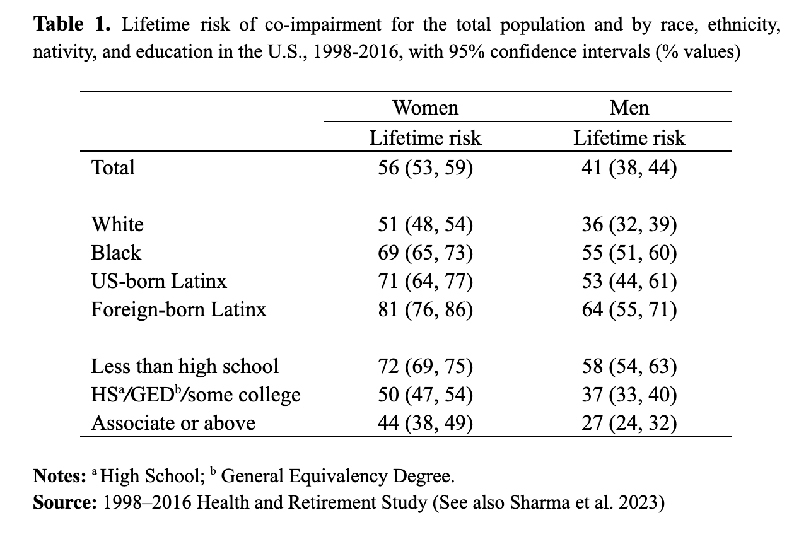
The Timing of the Age at Which Natural Menopause Occurs
1. Cooper GS, Sandler DP. Age at natural menopause and mortality. Ann Epidemiol. 1998;8:229–35. [PubMed] [Google Scholar]
2. Wise AM, Krajnak KM, Kashon ML. Menopause: the aging of multiple pacemakers. Science. 1996;273:67–70. [PubMed] [Google Scholar]
3. Snowdon DA, Kane RL, Beeson WL, et al. Is early natural menopause a biologic marker of health and aging? Am J Public Health. 1989;79:709–14. [PMC free article] [PubMed] [Google Scholar]
4. Ossewaarde ME, Bots ML, Verbeek ALM, et al. Age at menopause, cause-specific mortality and total life expectancy. Epidemiology. 2005;16:556–62. [PubMed] [Google Scholar]
5. Jacobsen BK, Heuch I, Kvale G. Age at natural menopause and all-cause mortality: a 37-year follow-up of 19,731 Norwegian women. Am J Epidemiol. 2003;157:923–9. [PubMed] [Google Scholar]
6. De Kleijn MJ, van der Schouw YT, Verbeek AL, et al. Endogenous estrogen exposure and cardiovascular mortality risk in postmenopausal women. Am J Epidemiol. 2002;155:339–45. [PubMed] [Google Scholar]
Am J Epidemiol. 2002;155:339–45. [PubMed] [Google Scholar]
7. Van der Schouw YT, van der Graaf Y, Steyerberg EW, et al. Age at menopause as a risk factor for cardiovascular mortality. Lancet. 1996;347:714–8. [PubMed] [Google Scholar]
8. Jacobsen BK, Nilssen S, Heuch I, et al. Does age at natural menopause affect mortality from ischemic heart disease? J Clin Epidemiol. 1997;50:475–9. [PubMed] [Google Scholar]
9. Hu FB, Grodstein F, Hennekens CH, et al. Age at natural menopause and risk of cardiovascular disease. Arch Intern Med. 1999;159:1061–6. [PubMed] [Google Scholar]
10. Atsma F, Bartelink ML, Grobbec DE, et al. Postmenopausal status and early menopause as independent risk factors for cardiovascular disease: a meta-analysis. Menopause. 2006;13:265–79. [PubMed] [Google Scholar]
11. Cui R, Iso H, Toyoshima H, et al. JACC Study Group. Relationships of age at menarche and menopause, and reproductive year with mortality from cardiovascular disease in Japanese postmenopausal women: the JACC study. J Epidemiol. 2006;16:177–84. [PMC free article] [PubMed] [Google Scholar]
J Epidemiol. 2006;16:177–84. [PMC free article] [PubMed] [Google Scholar]
12. Jansen SC, Temme EH, Schouten EG. Lifetime estrogen exposure versus age at menopause as mortality predictor. Maturitas. 2002;43:105–12. [PubMed] [Google Scholar]
13. Jacobsen BK, Knutsen SF, Fraser GE. Age at natural menopause and total mortality and mortality from ischemic heart disease: the Adventist Health Study. J Clin Epidemiol. 1999;52:303–7. [PubMed] [Google Scholar]
14. Lisabeth LD, Beiser AS, Brown DL, et al. Age at natural menopause and risk of ischemic stroke The Framingham Heart Study. Stroke. 2009;40:1044–9. [PMC free article] [PubMed] [Google Scholar]
15. Parashar S, Reid KJ, Spertus JA, et al. Early menopause predicts angina after myocardial infarction. Menopause. 2010;17:938–45. [PMC free article] [PubMed] [Google Scholar]
16. Joakimsen O, Bonaa KH, Stensland-Bugge E, et al. Population-based study of age at menopause and ultrasound assessed carotid atherosclerosis: the Tromso Study. J Clin Epidemiol. 2000;53:525–30. [PubMed] [Google Scholar]
J Clin Epidemiol. 2000;53:525–30. [PubMed] [Google Scholar]
17. Parazzini F, Bidoli E, Franceschi S, et al. Menopause, menstrual and reproductive history, and bone density in northern Italy. J Epidemiol Community Health. 1996;50:519–23. [PMC free article] [PubMed] [Google Scholar]
18. Kritz-Silverstein D, Barrett-Connor E. Early menopause, number of reproductive years, and bone mineral density in postmenopausal women. Am J Public Health. 1993;83:983–8. [PMC free article] [PubMed] [Google Scholar]
19. Van Der Voort DJ, Van Der Weijer PH, Barentsen R. Early menopause: increased fracture risk at older age. Osteoporos Int. 2003;14:525–30. [PubMed] [Google Scholar]
20. Kelsey JL, Gammon MD, John EM. Reproductive factors and breast cancer. Epidemiol Rev. 1993;15:36–47. [PubMed] [Google Scholar]
21. Monninkhof EM, van der Schouw YT, Peeters PH. Early age at menopause and breast cancer: are leaner women more protected? A prospective analysis of the Dutch DOM cohort.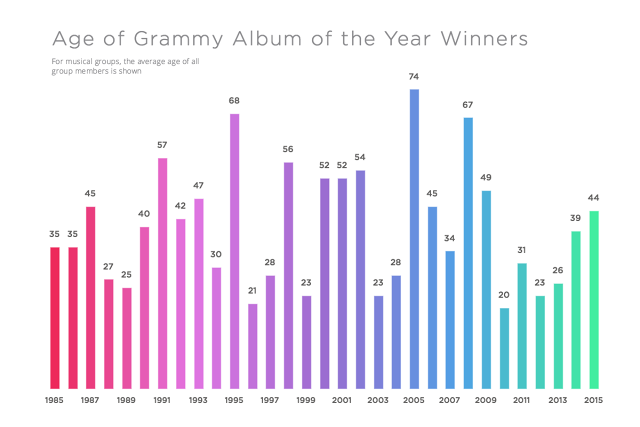 Breast Cancer Res Treat. 1999;55:285–91. [PubMed] [Google Scholar]
Breast Cancer Res Treat. 1999;55:285–91. [PubMed] [Google Scholar]
22. De Graaff J, Stolte LA. Age at menarche and menopause of uterine cancer patients. Eur J Obstet Gynecol Reprod Biol. 1978;8:187–93. [PubMed] [Google Scholar]
23. Franceschi S, La Vecchia C, Booth M, et al. Pooled analysis of 3 European case-control studies of ovarian cancer: II. Age at menarche and at menopause. Int J Cancer. 1991;49:57–61. [PubMed] [Google Scholar]
24. Kaaks R, Lukanova A, Kurzer MS. Obesity, endogenous hormones, and endometrial cancer risk: a synthetic review. Cancer Epidemiol Biomarkers Prev. 2002;11:1531–43. [PubMed] [Google Scholar]
25. Xu WH, Xiang YB, Ruan ZX, et al. Menstrual and reproductive factors and endometrial cancer risk: results from a population-based case-control study in urban Shanghai. Int J Cancer. 2004;108:613–9. [PubMed] [Google Scholar]
26. Rivera CM, Grossardt BR, Rhodes DJ, et al. Increased cardiovascular mortality after early bilateral oophorectomy. Menopause. 2009;16:15–23. [PMC free article] [PubMed] [Google Scholar]
Menopause. 2009;16:15–23. [PMC free article] [PubMed] [Google Scholar]
27. Lokkegaard E, Jovanovic Z, Heitmann BL, et al. The association between early menopause and risk of ischaemic heart disease: influence of hormone therapy. Maturitas. 2006;53:226–33. [PubMed] [Google Scholar]
28. Woods NF, Mitchell ES, Adams C. Memory functioning among midlife women: observations for the Seattle Midlife Women’s health Study. Menopause. 2000;7:257–65. [PubMed] [Google Scholar]
29. Halbreich U, Piletz J, Halaris A. Influence of gonadal hormones on neurotransmitters, receptor, cognition and mood. Clin Neuropharmacol. 1992;15(Suppl A):590A–1A. [PubMed] [Google Scholar]
30. Kok HS, Kuh D, Cooper R, et al. Cognitive function across the life course and the menopausal transition in a British birth cohort. Menopause. 2006;13:19–27. [PubMed] [Google Scholar]
31. World Health Organization . Research on the menopause in the 1990s. World Health Organization; Geneva (Switzerland): 1996. [Google Scholar]
[Google Scholar]
32. Skolnick AA. At third meeting, menopause experts make the most of insufficient data. JAMA. 1992;268:2483–5. [PubMed] [Google Scholar]
33. Avis NE, Kaufert PA, Lock M, et al. The evolution of menopausal symptoms. Baillieres Clin Endocrinol Metab. 1993;7:17–32. [PubMed] [Google Scholar]
34. Cramer DW, Xu H. Predicting age at menopause. Maturitas. 1996;23:319–26. [PubMed] [Google Scholar]
35. Hahn RA, Eaker E, Rolka H. Reliability of reported age at menopause. Am J Epidemiol. 1997;146:771–5. [PubMed] [Google Scholar]
36. Sowers MF, LaPietra MT. Menopause: its epidemiology and potential association with chronic diseases. Epidemiol Rev. 1995;17:287–302. [PubMed] [Google Scholar]
37. Gosden RG. Biology of the menopause: the causes and consequences of ovarian ageing. Academic Press; London: 1985. [Google Scholar]
38. Burger HG, Dudley EC, Hopper JL. The endocrinology of the menopausal transition: a cross-sectional study of a population-based sample.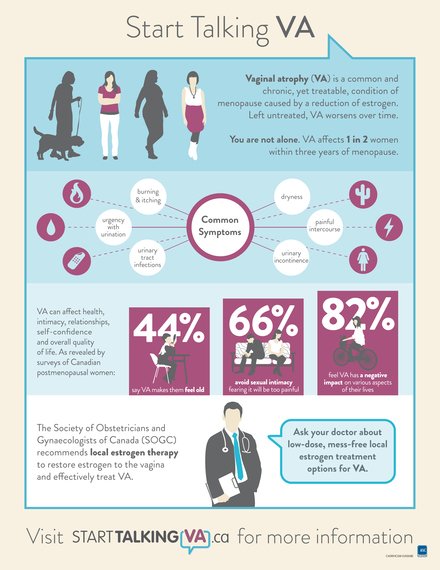 J Clin Endocrinol Metab. 1995;80:3537–45. [PubMed] [Google Scholar]
J Clin Endocrinol Metab. 1995;80:3537–45. [PubMed] [Google Scholar]
39. Soule MR, Bremner WJ. The menopause and climacteric: endocrinologic basis and associated symptomatology. J Am Geriatrics Soc. 1982;30:547. [PubMed] [Google Scholar]
40. Thomford PJ, Jelovsek FR, Mattison DR. Effect of oocyte number and rate of atresia on the age of menopause. Repro Toxicol. 1987;1:41–51. [PubMed] [Google Scholar]
41. Faddy MJ, Gosden RG, Gougeon A, et al. Accelerated disappearance of ovarian follicles in mid-life: implications for forecasting menopause. Hum Reprod. 1992;7:1342–6. [PubMed] [Google Scholar]
42. Ginsberg J. What determines the age at the menopause. BMJ. 1991;302:1288–9. [PMC free article] [PubMed] [Google Scholar]
43. Aydos SE, Elhan AH, Tukun A. Is telomere length one of the determinants of reproductive life span? Arch Gynecol Obstet. 2005;2727:113–6. [PubMed] [Google Scholar]
44. Sherman BM, West JH, Korenman SG. The menopausal transition: analysis of LH, FSH, estradiol and progesterone concentrations during menstrual cycles of older women.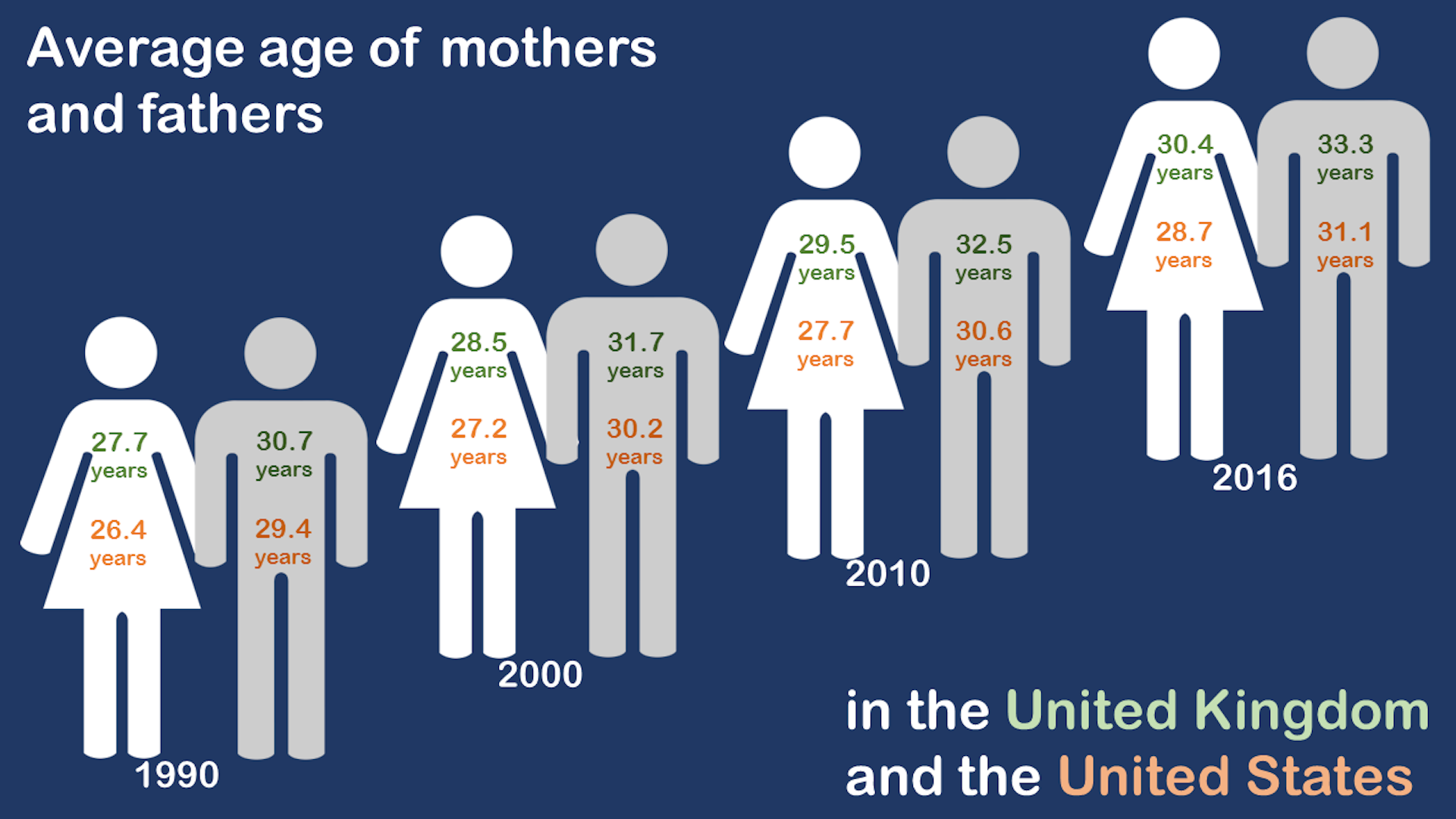 J Clin Endocrinol Metab. 1976;42:629–36. [PubMed] [Google Scholar]
J Clin Endocrinol Metab. 1976;42:629–36. [PubMed] [Google Scholar]
45. Santoro N, Rosenberg-Brown J, Adel T, et al. Characterization of reproductive hormonal dynamics in the perimenopause. J Clin Endocrinol Metab. 1996;81:1495–1501. [PubMed] [Google Scholar]
46. Upton GV. The perimenopause: physiologic correlates and clinical management. J Reprod Med. 1982;27:1–28. [PubMed] [Google Scholar]
47. Shideler SE, DeVane GW, Kalra PS, et al. Ovarian pituitary hormone interactions during the menopause. Maturitas. 1989;11:331–9. [PubMed] [Google Scholar]
48. Trevoux R, DeBrux J, Castaneir M, et al. Endometrium and plasma hormone profile in the peri-menopause and post-menopause. Maturitas. 1986;8:309–26. [PubMed] [Google Scholar]
49. McKinlay SM, Brambilla DJ, Posner JG. The normal menopause transition. Maturitas. 1992;14:103–15. [PubMed] [Google Scholar]
50. Greendale G, Hogan P, Kritz-Silverstein D, et al. Age at menopause in women participating in the postmenopausal estrogen/progestins interventions (PEPI) trial: an example of bias introduced by selection criteria. Menopause. 1995;2:27–34. for the PEPI trial investigators. [Google Scholar]
Menopause. 1995;2:27–34. for the PEPI trial investigators. [Google Scholar]
51. Luoto R, Laprio J, Uutela A. Age at natural menopause and sociodemographic status in Finland. Am J Epidemiol. 1994;139:64–76. [PubMed] [Google Scholar]
52. Stanford JL, Hartge P, Brinton LA, et al. Factors influencing the age at natural menopause. J Chron Dis. 1987;40:995–1002. [PubMed] [Google Scholar]
53. Magursky V, Mesko M, Sokolik L. Age at the menopause and onset of the climacteric in women of Martin district, Czechoslovakia. Int J Fertil. 1975;20:17–23. [PubMed] [Google Scholar]
54. Gold EB, Sternfeld B, Brown C, et al. The relation of demographic and lifestyle variables to symptoms in a multi-racial/ethnic population of women aged 40-55 years. Am J Epidemiol. 2000;152:463–73. [PubMed] [Google Scholar]
55. van Noord PAH, Dubas JS, Dorland M, et al. Age at natural menopause in a population-based screening cohort: the role of menarche, fecundity, and lifestyle factors. Fertil Steril. 1997;68:95–102. [PubMed] [Google Scholar]
1997;68:95–102. [PubMed] [Google Scholar]
56. Flint M. Is there a secular trend in age of menopause. Maturitas. 1978;1:133–9. [PubMed] [Google Scholar]
57. Rodstrom K, Bengtsson C, Milsom I, et al. Evidence for a secular trend in menopausal age: a population study of women in Gothenburg. Menopause. 2003;10:538–43. [PubMed] [Google Scholar]
58. Gold EB, Bromberger J, Crawford S, et al. Factors associated with age at menopause in a multi-ethnic population of women. Am J Epidemiol. 2001;153:865–74. [PubMed] [Google Scholar]
59. Bromberger JT, Matthews KA, Kuller LH, et al. Prospective study of the determinants of age at menopause. Am J Epidemiol. 1997;145:124–33. [PubMed] [Google Scholar]
60. Alvarado G, Rivera R, Ruiz R, et al. Characteristicas del patron de sangrado menstrual en un grupo de mujeres normales de Durango. Ginecol Obstetr Mex. 1988;56:127–33. [PubMed] [Google Scholar]
61. Torgerson DJ, Avenell A, Russell IT, et al. Factors associated with onset of menopause in women aged 45-49. Maturitas. 1994;19:83–92. [PubMed] [Google Scholar]
Maturitas. 1994;19:83–92. [PubMed] [Google Scholar]
62. MacMahon B, Worcester J. Age at menopause, United States 1960-1962. Vital Health Stat. 1966;19:1–19. [PubMed] [Google Scholar]
63. Palmer JR, Rosenberg L, Wise LA, et al. Onset of natural menopause in African American women. Am J Public Health. 2003;93:299–306. [PMC free article] [PubMed] [Google Scholar]
64. McKinlay SM, Bifano NL, McKinlay JB. Smoking and age at menopause in women. Ann Intern Med. 1985;103:350–6. [PubMed] [Google Scholar]
65. Andersen FS, Transbol I, Christiansen C. Is cigarette smoking a promoter of the menopause. Acta Med Scand. 1982;212:137–9. [PubMed] [Google Scholar]
66. Hiatt RA, Fireman BH. Smoking, menopause, and breast cancer. J Natl Cancer Inst. 1986;76:833–8. [PubMed] [Google Scholar]
67. Hartz AJ, Kelber S, Borkowf H, et al. The association of smoking with clinical indicators of altered sex steroids—a study of 50,145 women. Pub Health Rep. 1987;102:254–9. [PMC free article] [PubMed] [Google Scholar]
68. Brambilla DJ, McKinlay SM. A prospective study of factors affecting age at menopause. J Clin Epidemiol. 1989;42:1031–9. [PubMed] [Google Scholar]
Brambilla DJ, McKinlay SM. A prospective study of factors affecting age at menopause. J Clin Epidemiol. 1989;42:1031–9. [PubMed] [Google Scholar]
69. Willett W, Stampfer MJ, Bain C, et al. Cigarette smoking, relative weight and menopause. Am J Epidemiol. 1983;117:651–8. [PubMed] [Google Scholar]
70. Snieder H, MacGregor AJ, Spector ID. Genes control cessation of a woman’s reproductive life: a twin study of hysterectomy and age at menopause. J Clin Endocrinol Met. 1998;83:1875–80. [PubMed] [Google Scholar]
71. Castelo-Branco C, Blümel JE, Chedraui P, et al. Age at menopause in Latin America. Menopause. 2006;13:706–12. Erratum in: Menopause 2006;13:850. [PubMed] [Google Scholar]
72. Gonzales GF, Villena A. Age at menopause in central Andean Peruvian women. Menopause. 1997;4:32–8. [Google Scholar]
73. McCarthy T. The prevalence of symptoms in menopausal women in the Far East: Singapore segment. Maturitas. 1994;19:199–204. [PubMed] [Google Scholar]
74. Samil RS, Wishnuwardhani SD. Health of Indonesian women, city-dwellers of perimenopausal age. Maturitas. 1994;19:191–7. [PubMed] [Google Scholar]
Health of Indonesian women, city-dwellers of perimenopausal age. Maturitas. 1994;19:191–7. [PubMed] [Google Scholar]
75. Wasti S, Robinson SC, Akhtar Y, et al. Characteristics of menopause in three groups in Karachi, Pakistan. Maturitas. 1993;16:61–9. [PubMed] [Google Scholar]
76. Blumel J, Cubillos M, Brandt A, et al. Some clinical aspects of menopause. Rev Chil Obstet Ginecol. 1988;53:278–82. [PubMed] [Google Scholar]
77. Kapoor AK, Kapoor S. The effects of high altitude on age at menarche and menopause. J Biometeor. 1986;30:21–6. [PubMed] [Google Scholar]
78. Beall CM. Ages at menopause and menarche in a high altitude Himalayan population. Ann Hum Biol. 1983;10:365–70. [PubMed] [Google Scholar]
79. Flint MP. PhD dissertation. City University of New York; 1974. Menarche and menopause in Rajput women. [Google Scholar]
80. Otolorin EO, Adeyefa I, Osotimehin BO, et al. Clinical, hormonal and biochemical features of menopausal women in Ibadan, Nigeria. Afr J Med Sci. 1989;18:251–5. [PubMed] [Google Scholar]
Afr J Med Sci. 1989;18:251–5. [PubMed] [Google Scholar]
81. Beyene Y. Cultural significance and physiological manifestations of menopause, a bicultural analysis. Culture Med Psychiatr. 1986;10:47–71. [PubMed] [Google Scholar]
82. Boulet M. The menopause and the climacteric in seven Asian countries. In: Sixth International Congress on the Menopause. Parthenon; New Jersey: 1990. [Google Scholar]
83. Chompootweep S, Tankeyoon M, Yamarat K, et al. The menopausal age and climacteric complaints in Thai women in Bangkok. Maturitas. 1993;17:63–71. [PubMed] [Google Scholar]
84. Ramoso-Jalbuena J. Climacteric Filipino women: a preliminary survey in the Philippines. Maturitas. 19:183–90. [PubMed] [Google Scholar]
85. Lawlor DA, Ebrahim S, Smith GD. The association of socio-economic position across the life course and age at menopause: the British Women’s Heart and Health Study. Br J Obstet Gynecol. 2003;110:1078–87. [PubMed] [Google Scholar]
86. Santoro N, Brockwell S, Johnston J, et al. Helping midlife women predict the onset of the final menses: SWAN, the Study of Women’s Health Across the Nation. Menopause. 2007;14:415–24. [PubMed] [Google Scholar]
Helping midlife women predict the onset of the final menses: SWAN, the Study of Women’s Health Across the Nation. Menopause. 2007;14:415–24. [PubMed] [Google Scholar]
87. Hardy R, Kuh D. Social and environmental conditions across the life course and age at menopause in a British birth cohort study. BJOG. 2005;112:346–54. [PubMed] [Google Scholar]
88. Mishra G, Hardy R, Kuh D. Are the effects of risk factors for timing of menopause modified by age? Results from a British birth cohort study. Menopause. 2007;14:717–24. [PubMed] [Google Scholar]
89. Brand PC, Lehert PH. A new way of looking at environmental variables that may affect the age at menopause. Maturitas. 1978;1:121–32. [PubMed] [Google Scholar]
90. McKinlay S, Jefferys M, Thompson B. An investigation of the age at menopause. J Biosoc Sci. 1972;4:161–73. [PubMed] [Google Scholar]
91. Whelan EA, Sandler DP, McConnaughey DR, et al. Menstrual and reproductive characteristics and age at natural menopause.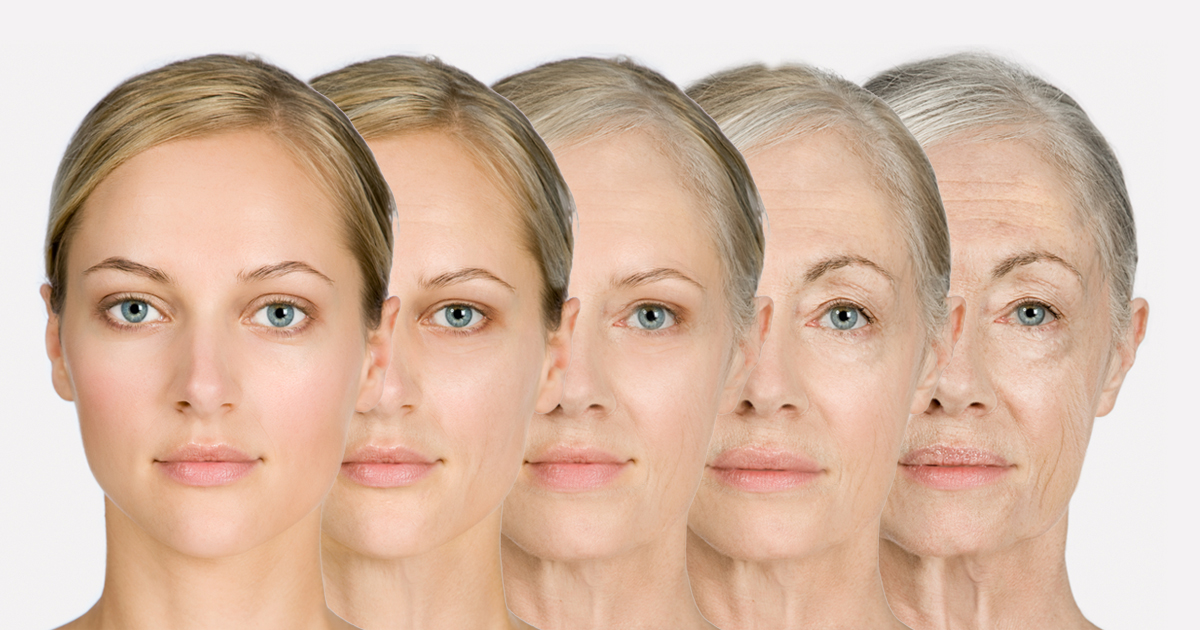 Am J Epidemiol. 1990;131:625–32. [PubMed] [Google Scholar]
Am J Epidemiol. 1990;131:625–32. [PubMed] [Google Scholar]
92. Treloar AE, Boynton RE, Behn BG, et al. Variation of the human menstrual cycle through reproductive life. Int J Fertil. 1966;12(Pt 2):77–126. [PubMed] [Google Scholar]
93. Soberon J, Calderon JJ, Goldzieher JW. Relation of parity to age at menopause. Am J Obstet Gynecol. 1966;96:96–100. [PubMed] [Google Scholar]
94. Dorjgochoo T, Kallianpur A, Gao Y-T, et al. Dietary and lifestyle predictors of age at natural menopause and reproductive span in the Shanghai Women’s Health Study. Menopause. 2008;15:924–33. [PMC free article] [PubMed] [Google Scholar]
95. Loh FH, Khin LW, Saw SM, et al. The age of menopause and the menopause transition in a multiracial population: a nation-wide Singapore study. Maturitas. 2005;52:169–80. [PubMed] [Google Scholar]
96. Reynolds RF, Obermeyer CM. Age at natural menopause in Spain and the United States: results from the DAMES project. Am J Hum Biol. 2005;17:331–40. [PubMed] [Google Scholar]
97.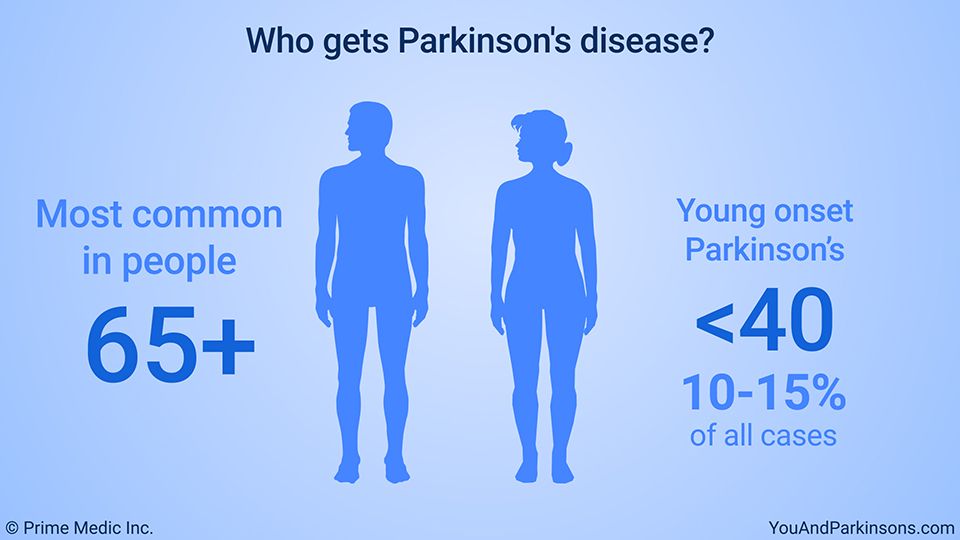 Parazzini F, Negri E, LaVecchia C. Reproductive and general lifestyle determinants of age at menopause. Maturitas. 1992;15:141–9. [PubMed] [Google Scholar]
Parazzini F, Negri E, LaVecchia C. Reproductive and general lifestyle determinants of age at menopause. Maturitas. 1992;15:141–9. [PubMed] [Google Scholar]
98. van Keep PA, Brand PC, Lehert PH. Factors affecting the age at menopause. J Biosoc Sci Suppl. 1979;6:37–55. [PubMed] [Google Scholar]
99. Lindquist O, Bengtsson C. Menopausal age in relation to smoking. Acta Med Scand. 1979;205:73–7. [PubMed] [Google Scholar]
100. Daniell HWP. Smoking, obesity, and the menopause. Lancet. 1978;2:373. [PubMed] [Google Scholar]
101. den Tonkelaar I, Seidell J. Fat distribution in relation to age, degree of obesity, smoking habits, parity and estrogen use: a cross-sectional study of 11,825 Dutch women participating in the DOM project. Int J Obesity. 1990;14:753–61. [PubMed] [Google Scholar]
102. Kaufman DW, Slone D, Rosenberg L, et al. Cigarette smoking and age at natural menopause. Am J Public Health. 1980;70:420–2. [PMC free article] [PubMed] [Google Scholar]
103. Kaye S, Folsom A, Prineas RJ, et al. The association of body fat distribution with lifestyle and reproductive factors in a population study of postmenopausal women. Int J Obesity. 1990;14:583–91. [PubMed] [Google Scholar]
Kaye S, Folsom A, Prineas RJ, et al. The association of body fat distribution with lifestyle and reproductive factors in a population study of postmenopausal women. Int J Obesity. 1990;14:583–91. [PubMed] [Google Scholar]
104. Kok HS, van Asselt KM, van der Schouw YT, et al. Genetic studies to identify genes underlying menopause age. Hum Reprod Update. 2005;11:483–93. [PubMed] [Google Scholar]
105. Van Asselt KM, Kok HS, Pearson PL, et al. Heritability of menopausal age in mothers and daughters. Fertil Steril. 2004;82:1348–51. [PubMed] [Google Scholar]
106. Torgerson DJ, Thomas RE, Reid DM. Mothers and daughters menopausal ages: is there a link? Eur J Obstet Gynecol Reprod Biol. 1997;74:63–6. [PubMed] [Google Scholar]
107. Cramer DW, Xu H, Harlow BL. Family history as a predictor of early menopause. Fertil Steril. 1995;64:740–5. [PubMed] [Google Scholar]
108. DeBruin JP, Bovenhuis H, VanNoord PA, et al. The role of genetic factors in age at natural menopause. Hum Reprod. 2001;16:2014–8. [PubMed] [Google Scholar]
Hum Reprod. 2001;16:2014–8. [PubMed] [Google Scholar]
109. Murabito JM, Yang Q, Fox C, et al. Heritability of age at natural menopause in the Framingham Heart Study. J Clin Endocrinol Metab. 2005;90:3427–30. [PubMed] [Google Scholar]
110. Stolk L, Zhai G, Van Meurs JB, et al. Loci at chromosomes 13, 19 and 20 influence age at natural menopause. Nat Genet. 2009;41:645–7. [PMC free article] [PubMed] [Google Scholar]
111. Weel AE, Uitterlinden AG, Westendorp IC, et al. Estrogen receptor polymorphism predicts the onset of natural and surgical menopause. J Clin Endocrinol Metab. 1999;84:3146–50. [PubMed] [Google Scholar]
112. He C, Kraft P, Chen C, et al. Genome-wide association studies identify loci associated with age at menarche and age at natural menopause. Nat Genet. 2009;41:724–8. [PMC free article] [PubMed] [Google Scholar]
113. He C, Kraft P, Chasman DI, et al. A large-scale candidate gene association study of age at menarche and age at natural menopause. Hum Genet. 2010;128:515–27. [PMC free article] [PubMed] [Google Scholar]
Hum Genet. 2010;128:515–27. [PMC free article] [PubMed] [Google Scholar]
114. Lu Y, Liu P, Recker RR, et al. TNFRSF11A and TNFSF11 are associated with age at menarche and natural menopause in white women. Menopause. 2010;17:1048–54. [PMC free article] [PubMed] [Google Scholar]
115. Hardy R, Kuh D. Does early growth influence timing of the menopause? Evidence from a British birth cohort. Hum Reprod. 2002;17:2474–9. [PubMed] [Google Scholar]
116. Cresswell JL, Egger P, Fall CH, et al. Is the age of menopause determined in-utero? Early Hum Dev. 1997;49:143–8. [PubMed] [Google Scholar]
117. Treloar SA, Sadrzadeh S, Do KA, et al. Birth weight and age at menopause in Australian female twin pairs: exploration of the fetal origin hypothesis. Hum Reprod. 2000;15:55–9. [PubMed] [Google Scholar]
118. Kuh D, Butterworth S, Kok H, et al. Childhood cognitive ability and age at menopause: evidence from two cohort studies. Menopause. 2005;12:475–82. [PubMed] [Google Scholar]
119. Richards M, Kuh D, Hardy R, et al. Lifetime cognitive function and timing of the natural menopause. Neurology. 1999;53:308–14. [PubMed] [Google Scholar]
Richards M, Kuh D, Hardy R, et al. Lifetime cognitive function and timing of the natural menopause. Neurology. 1999;53:308–14. [PubMed] [Google Scholar]
120. Whalley LJ, Fox HC, Starr JM, et al. Age at natural menopause and cognition. Maturitas. 2004;49:148–56. [PubMed] [Google Scholar]
121. Kinney A, Kline J, Levin B. Alcohol, caffeine and smoking in relation to age at menopause. Maturitas. 2006;54:27–38. [PubMed] [Google Scholar]
122. McKinlay SM, Brambilla DJ, Posner JG. The normal menopause transition. Maturitas. 1992;14:103–15. [PubMed] [Google Scholar]
123. Adena MA, Gallagher HG. Cigarette smoking and the age at menopause. Ann Human Biol. 1982;9:121–30. [PubMed] [Google Scholar]
124. Jick H, Porter J, Morrison AS. Relation between smoking and age of natural menopause. Lancet. 1977;1:1354–5. [PubMed] [Google Scholar]
125. Midgett AS, Baron JA. Cigarette smoking and the risk of natural menopause. Epidemiol. 1990;1:464–80. [Google Scholar]
126.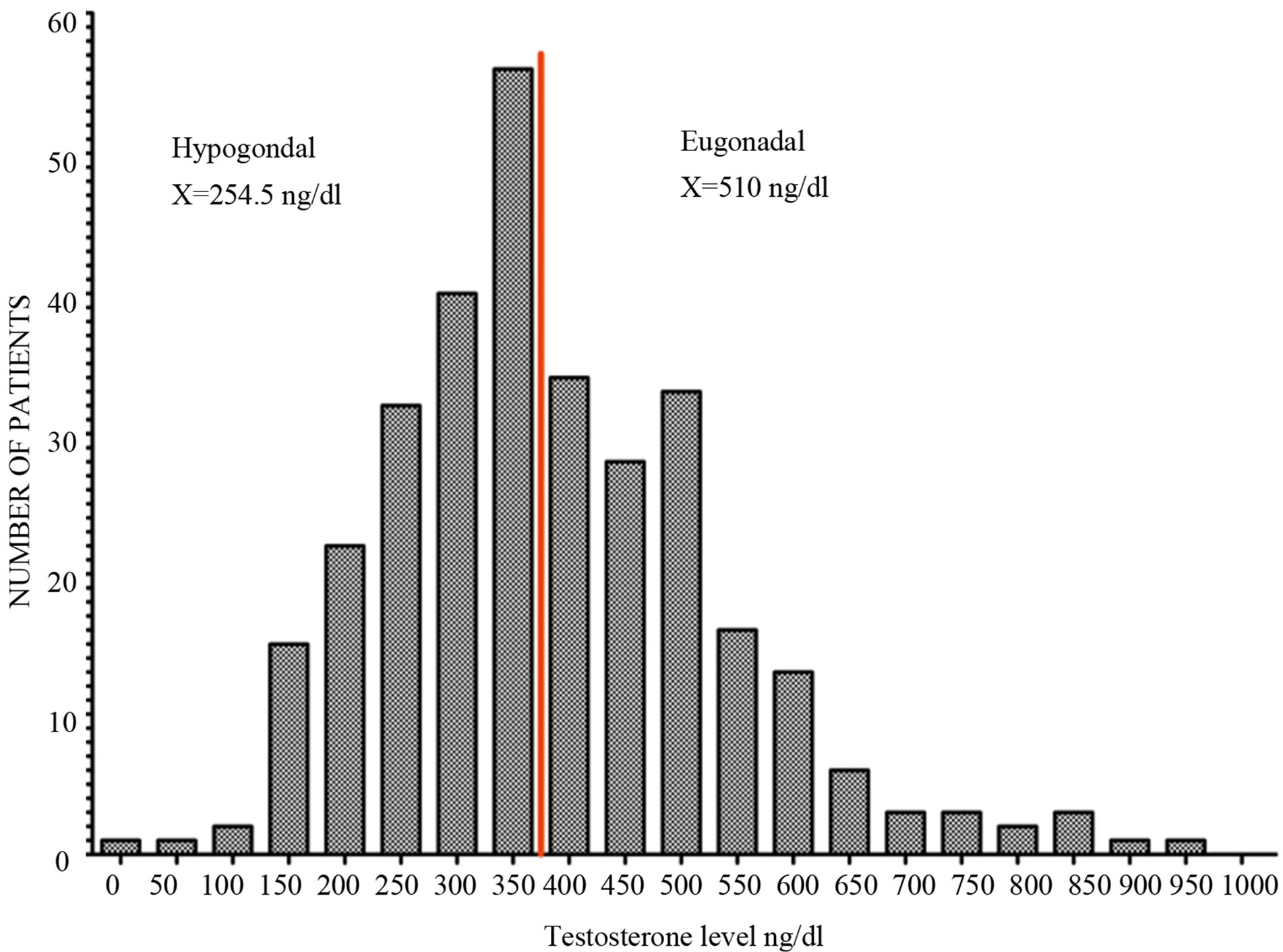 Mattison DR, Thorgierssen SS. Smoking and industrial pollution and their effects on menopause and ovarian cancer. Lancet. 1978;1:187–8. [PubMed] [Google Scholar]
Mattison DR, Thorgierssen SS. Smoking and industrial pollution and their effects on menopause and ovarian cancer. Lancet. 1978;1:187–8. [PubMed] [Google Scholar]
127. Essenberg JM, Fagan L, Malerstein AJ. Chronic poisoning of the ovaries and testes of albino rats and mice by nicotine and cigarette smoke. West J Surg Obstet Gynecol. 1951;59:27–32. [PubMed] [Google Scholar]
128. Hart P, Farrell GC, Cooksley WGE, et al. Enhanced drug metabolism in cigarette smokers. Br Med J. 1976;3:147–9. [PMC free article] [PubMed] [Google Scholar]
129. Michnovicz J, Hershcopf R, Naganuma H, et al. Increased 2-hydroxylation of estradiol as a possible mechanism for the anti-estrogenic effect of cigarette smoking. N Engl J Med. 1986;315:1305–9. [PubMed] [Google Scholar]
130. Krailo MD, Pike MC. Estimation of the distribution of the age at natural menopause from prevalence data. Am J Epidemiol. 1983;117:356–61. [PubMed] [Google Scholar]
131. Everson RB, Sandler DP, Wilcox AJ, et al. Effect of passive exposure to smoking on age at natural menopause. Br Med J. 1986;293:792. [PMC free article] [PubMed] [Google Scholar]
Effect of passive exposure to smoking on age at natural menopause. Br Med J. 1986;293:792. [PMC free article] [PubMed] [Google Scholar]
132. Mamelle N, Laumon B, Lazar P. Prematurity and occupational activity during pregnancy. Am J Epidemiol. 1984;119:309–22. [PubMed] [Google Scholar]
133. McDonald AD, McDonald JC, Armstrong B, et al. Fetal death and work in pregnancy. Br J Ind Med. 1988;45:148–57. [PMC free article] [PubMed] [Google Scholar]
134. Beaumont JJ, Swan SH, Hammond SK, et al. Historical cohort investigation of spontaneous abortion in the Semiconductor health Study: methods and analyses of risk in fabrication overall and in fabrication work groups. Am J Ind Med. 1995;28:735–50. [PubMed] [Google Scholar]
135. Swan SH, Beaumont JJ, Hammond SK, et al. Historical cohort study of spontaneous abortion among fabrication workers in the Semiconductor Health Study; agent-level analysis. Am J Ind Med. 1995;28:751–70. [PubMed] [Google Scholar]
136. Ng TP, Foo SC, Young T. Menstrual function in workers exposed to toluene. Br J Ind Med. 1992;49:799–803. [PMC free article] [PubMed] [Google Scholar]
Menstrual function in workers exposed to toluene. Br J Ind Med. 1992;49:799–803. [PMC free article] [PubMed] [Google Scholar]
137. Messing K, Saurel-Cubizolles MG, Bourgine M, et al. Menstrual cycle characteristics and work condition of workers in poultry slaughterhouses and canneries. Scand J Work Environ Health. 1992;18:302–9. [PubMed] [Google Scholar]
138. Eskenazi B, Gold EB, Samuels SJ, et al. Prospective assessment of fecundability of female semiconductor workers. Am J Ind Med. 1995;28:817–32. [PubMed] [Google Scholar]
139. Gold EB, Eskenazi B, Hammond SK, et al. Prospectively assessed menstrual cycle characteristics in female wafer-fabrication and nonfabrication semiconductor employees. Am J Ind Med. 1995;28:799–816. [PubMed] [Google Scholar]
140. Falck F, Jr, Ricci A, Jr, Wolff MS, et al. Pesticides and polychlorinated biphenyl residues in human breast lipids and their relation to breast cancer. Arch Environ Health. 1992;47:143–6. [PubMed] [Google Scholar]
141. Wolff MS, Toniolo PG, Lee EW, et al. Blood levels of organochlorine residues and risk of breast cancer. J Natl Cancer Inst. 1993;85:648–52. [PubMed] [Google Scholar]
Wolff MS, Toniolo PG, Lee EW, et al. Blood levels of organochlorine residues and risk of breast cancer. J Natl Cancer Inst. 1993;85:648–52. [PubMed] [Google Scholar]
142. Krieger N, Wolff MS, Hiatt RA, et al. Breast cancer and serum organochlorines: a prospective study among white, black and Asian women. J Natl Cancer Inst. 1994;86:589–99. [PubMed] [Google Scholar]
143. Hunter DJ, Hankinson SE, Laden F, et al. Plasma organochlorine levels and risk of breast cancer. N Engl J Med. 1997;337:1253–8. [PubMed] [Google Scholar]
144. Eskenazi B, Warner M, Marks AR, et al. Serum dioxin concentrations and age at menopause. Environ Health Perspect. 2005;113:858–62. [PMC free article] [PubMed] [Google Scholar]
145. Cooper GS, Savitz DA, Millikan R, et al. Organochlorine exposure and age at natural menopause. Epidemiol. 2002;13:729–33. [PubMed] [Google Scholar]
146. Cummings SR, Kelsey J, Nevitt MC, et al. Epidemiology of osteoporosis and osteoporotic fractures. Epidemiol Rev. 1985;7:178–208. [PubMed] [Google Scholar]
1985;7:178–208. [PubMed] [Google Scholar]
147. Bonen A, Ling WH, Belcastro AN, et al. Profiles of selected hormones during menstrual cycles of teenage athletes. J Appl Physiol. 1981;50:545–51. [PubMed] [Google Scholar]
148. Jurkowski JE, Joanes NL, Walker C, et al. Ovarian hormonal responses to exercise. J Appl Physiol. 1978;44:109–14. [PubMed] [Google Scholar]
149. Loucks AB, Mortola LF, Girtoon L, et al. Alterations in the hypothalamic-pituitary-ovarian and the hypothalamic-pituitary-adrenal axes in athletic women. J Clin Endocrinol Metab. 1989;68:402–11. [PubMed] [Google Scholar]
150. Jasienska G, Ziomkiewicz A, Thune I, et al. Habitual physical activity and estradiol levels in women of reproductive age. Eur J Cancer Prev. 2006;15:439–45. [PubMed] [Google Scholar]
151. Bernstein L, Ross RK, Lobo RA, et al. The effects of moderate physical activity on menstrual cycle patterns in adolescence: implications for breast cancer prevention. Br J Cancer. 1987;55:681–5. [PMC free article] [PubMed] [Google Scholar]
[PMC free article] [PubMed] [Google Scholar]
152. Loucks AB, Horvath SM. Athletic amenorrhea: a review. Med Sci Sports Exer. 1985;17:56–72. [PubMed] [Google Scholar]
153. Scragg RFR. Menopause and reproductive span in rural Nuigini. Proc Ann Symp Papua New Guinea Med Soc. 1973:126–44. [Google Scholar]
154. Baird DD, Trlavsky FA, Anderson JJB. Do vegetarians have earlier menopause? Proc Soc Epidemiol Res. 1988:907–8. [Google Scholar]
155. Nagata C, Takatsuka N, Kawakami N, et al. Association of diet with the onset of menopause in Japanese women. Am J Epidemiol. 2000;152:863–7. [PubMed] [Google Scholar]
156. Nagata C, Takatsuka N, Inaba S, et al. Association of diet and other lifestyle with onset of menopause in Japanese women. Maturitas. 1998;29:105–13. [PubMed] [Google Scholar]
157. Nagel G, Altenburg HP, Nieters A, et al. Reproductive and dietary determinants of the age at menopause in EPIC-Heidelberg. Maturitas. 2005;52:337–47. [PubMed] [Google Scholar]
158. Hill PB, Garbaczewski L, Daynes G, et al. Gonadotrophin release and meat consumption in vegetarian women. Am J Clin Nutr. 1986;43:37–41. [PubMed] [Google Scholar]
Hill PB, Garbaczewski L, Daynes G, et al. Gonadotrophin release and meat consumption in vegetarian women. Am J Clin Nutr. 1986;43:37–41. [PubMed] [Google Scholar]
159. Adlercreutz H, Mousavi Y, Loukovaara M, et al. Lignans, isoflavones, sex hormone metabolism and breast cancer. In: Hochberg R, Naftolin F, editors. The new biology of steroid hormones. Raven Press; New York: 1992. pp. 145–54. [Google Scholar]
160. Martin LJ, Greenberg CV, Kriukov V, et al. Intervention with a low-fat, high-carbohydrate diet does not influence the timing of menopause. Am J Clin Nutr. 2006;84:920–8. [PubMed] [Google Scholar]
161. Cassidy A, Bingham S, Setchell KDR. Biological effects of a diet of soy protein rich in isoflavones on the menstrual cycle of premenopausal women. Am J Clin Nutr. 1994;60:333–40. [PubMed] [Google Scholar]
162. Baird DD, Umbach DM, Lansdell L, et al. Dietary intervention study to assess estrogenicity of dietary soy among postmenopausal women. J Clin Endocrinol Metab. 1995;80:1685–90. [PubMed] [Google Scholar]
1995;80:1685–90. [PubMed] [Google Scholar]
When Does Menopause Start? – Forbes Health
Table of Contents
What Is Menopause?
What Age Does Menopause Start?
How to Know if Menopause Has Started
{{ tocState.toggleTocShowMore ? ‘Show more’ : ‘Show less’ }}
If you’re wondering at what age you may start experiencing menopause, you’re not alone. Many have this question in the back of their minds, especially as they move toward and beyond middle age. While menopause is a completely normal part of the aging process, all of the changes it can bring may feel intimidating. Having an idea of when to expect it can offer some relief.
While there is an average age for menopause to begin, everyone’s experiences are unique to them. There are some factors that can determine the onset of menopause, and not everyone will have the same symptoms.
Read on to get a better idea of when you can expect menopause to start.
FEATURED PARTNER OFFER
Partner Offers feature brands who paid Forbes Health to appear at the top of our list. While this may influence where their products or services appear on our site, it in no way affects our ratings, which are based on thorough research, solid methodologies and expert advice. Our partners cannot pay us to guarantee favorable reviews of their products or services
HUM Nutrition Menopause Support
- Triple-tested for purity
- Helps reduce hot flashes and vaginal dryness
- Balances mood swings and sleeplessness
- Made with rhubarb extract, probiotics, & grape seed extract
- Helps relieve heart racing, low sex drive, bladder problems, and joint & muscle discomfort
Shop Now
On HUM Nutrition’s Website
What Is Menopause?
Menopause officially occurs when there is a cessation of ovarian hormonal production, typically resulting in the absence of a menstrual period for one full calendar year. Once an individual has officially entered menopause, they will no longer get their menstrual period and will no longer be able to get pregnant.
Once an individual has officially entered menopause, they will no longer get their menstrual period and will no longer be able to get pregnant.
As hormones like estrogen, progesterone and testosterone start to decrease, a lot of physiologic, behavioral and psychosocial changes can take place, explains Emily Anderson, a gerontology clinical nurse specialist based in Minnesota. This transition period, known as perimenopause, typically results in “urogenital changes like vaginal dryness and urinary incontinence, reduced bone density, vasomotor changes like hot flashes and night sweats, cognitive decline and increased risk of ischemic heart disease,” says Andereson.
Perimenopause and Menopause: What’s the Difference?
Think of the years before menopause as a transition period, where a person may experience some changes in their body. This is the perimenopause period, and it can last anywhere between four to eight years tippy-popover-container-bg-white’ }”>[1]Menopause 101. The North American Menopause Society. Accessed 1/24/2023. . Perimenopause generally begins with changes in the length of a person’s menstrual period and ends after 12 months of a person not getting their period, signaling the start of menopause.
“During this period of time, the ovaries begin producing fewer hormones, which may result in irregular menstrual cycles and symptoms of lower estrogen,” explains Anderson.
While perimenopause and menopause may cause similar symptoms, the presence of a menstrual period, even one that is late, during perimenopause is the main difference between them. “During perimenopause, fertility and conception are still possible, as the potential for ovulation still remains,” says Anderson. “However, after a woman’s final menses occurs (signaling menopause) natural fertility and conception are no longer achievable.”
Perimenopause vs Early Menopause: What’s the Difference?
Early menopause is menopause that happens between the ages of 40 and 45.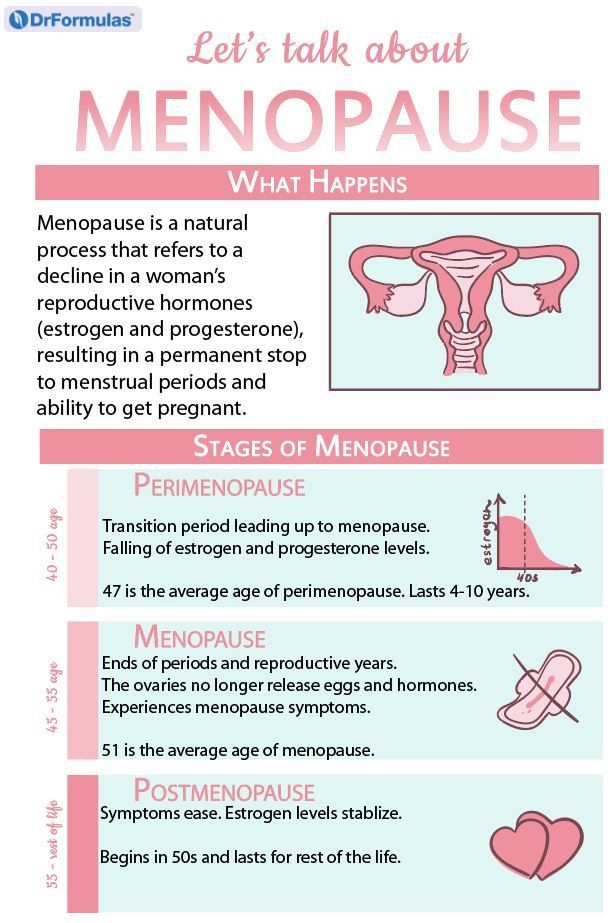 About 5% of people naturally go through early menopause, and there are some factors that can cause this to happen, such as smoking or certain medicines or treatments, like the removal of the ovaries.
About 5% of people naturally go through early menopause, and there are some factors that can cause this to happen, such as smoking or certain medicines or treatments, like the removal of the ovaries.
In the case of early menopause, “menstrual cycles end prematurely due to ovarian or follicular dysfunction,” says Anderson. She notes that perimenopause might happen before early menopause, but it might not. Some factors that may cause early menopause include:
- Certain autoimmune diseases, such as thyroid disease or rheumatoid arthritis
- Certain genetic disorders, such as Turner’s syndrome
- Chronic fatigue syndrome
- Surgery to remove the ovaries
- Chemotherapy or pelvic radiation
- Smoking
- A family history of early menopause
While perimenopause can be the body’s way of preparing for menopause, early menopause is when menopause begins before the average starting age.
FEATURED PARTNER OFFER
Partner Offers feature brands who paid Forbes Health to appear at the top of our list. While this may influence where their products or services appear on our site, it in no way affects our ratings, which are based on thorough research, solid methodologies and expert advice. Our partners cannot pay us to guarantee favorable reviews of their products or services
While this may influence where their products or services appear on our site, it in no way affects our ratings, which are based on thorough research, solid methodologies and expert advice. Our partners cannot pay us to guarantee favorable reviews of their products or services
Nutrafol Women’s Balance
- Physician-formulated to improve hair growth with visibly more thickness in women 45
- Works to target root causes of thinning like hormones, metabolism, and aging
- Trusted by 3,500+ healthcare providers
- 100% drug-free, medical-grade, natural ingredients
- 120 capsules per bottle
Shop Now
On Nutrafol’s Website
What Age Does Menopause Start?
The average age that menopause begins is 51, and most will experience menopause between the ages of 40 and 58[1]Menopause 101. The North American Menopause Society. Accessed 1/24/2023. . As Anderson notes, there is no way to predict exactly what age menopause will start since there are so many different contributing factors.
The North American Menopause Society. Accessed 1/24/2023. . As Anderson notes, there is no way to predict exactly what age menopause will start since there are so many different contributing factors.
“Genetics play a strong role,” she says, and a person may be able to get a general idea of when menopause will begin by noting what age their mother experienced it.
A 2021 research letter in the Journal of the American Medical Association exemplifies just how many factors can play into the age that menopause. The letter highlights a study analyzing 60-year trends in age for natural menopause and reproductive life span. Researchers found that Black women or women of Hispanic ethnicity had an earlier age of natural menopause. Lower socioeconomic status, current and former smoking status and hormone therapy use were also associated with an earlier age of natural menopause. Researchers also found that more education and oral contraceptive use were associated with a later age of natural menopause tippy-popover-container-bg-white’ }”>[2]Appiah D, Nwabuo C, Ebony I, et al. Trends in Age at Natural Menopause and Reproductive Life Span Among US Women, 1959-2018. JAMA. 2021;325(13):1328-1330. .
Diet may also play a role in menopause onset. A 2018 U.K. study in the Journal of Epidemiology and Community Health linked an earlier onset of menopause with a diet that included a higher amount of refined pasta and rice, while later onset of menopause occurred with a diet of higher amounts of oily fish and fresh legumes[3]Dunneram Y, Greenwood DC, Burley VJ, et al. Dietary intake and age at natural menopause: results from the UK Women’s Cohort Study. J Epidemiol Community Health 2018;72:733-740. .
Because the age a person reaches menopause is dependent on so many factors, it’s important to reach out to your doctor if you believe you may be dealing with perimenopause, early menopause or menopause itself.
How to Know if Menopause Has Started
The definitive way of knowing menopause has begun is if your menstrual period is absent for 12 consecutive months. “I recommend that women track their menstrual cycles each month, which will serve as an alert to irregular or absent menstrual cycles,” explains Anderson.
Even though menopause is a completely normal part of life,it may still feel overwhelming to some. Thankfully, there are ways to make the transition easier. “Both hormonal and non-hormonal therapies can be utilized to help alleviate the symptoms of menopause,” says Anderson.
For those transitioning into menopause, Anderson recommends 150 minutes of exercise each week, using a combination of walking and strength training. “This may improve blood sugar stabilization, enhance sleep, reduce risk of cardiovascular disease, aid in bone health and improve mood,” she says. She also recommends non-hormonal therapies such as herbs like maca, chaste tree, schisandra and red clover to reduce symptoms including hot flashes, night sweats and insomnia. “Vitamins and minerals like magnesium, vitamins B6, C and D can offer mood support as well as protection against loss of bone density,” adds Anderson.
“Vitamins and minerals like magnesium, vitamins B6, C and D can offer mood support as well as protection against loss of bone density,” adds Anderson.
Hormonal treatments are available as well, and usually involve the use of bio-identical hormones including estrogen, progesterone and testosterone. “During perimenopause, often the only hormone needed is progesterone to help balance estrogen and enhance the brain’s ability to cope with stress,” says Anderson. “Progesterone converts to a neurosteroid called allopregnanolone which can cross the blood-brain-barrier and act on GABA receptors to help calm the brain. This can help to reduce symptoms of anxiety and poor sleep.”
Those interested in trying either a non-hormonal or hormonal treatment during menopause or during the transition into menopause should speak with their doctor to come up with a plan that works for them.
Discover A Multi-Symptom Menopause Support Formula
HUM Nutrition menopause supplements are an estrogen-free, non-hormonal, clinically-studied probiotic formula that addresses 11 symptoms of perimenopause and menopause.
Shop Now
On HUM Nutrition’s Website
Named the average age of menopause in Russian women – Newspaper.Ru
Named the average age of menopause in Russian women – Gazeta.Ru | News
Text size
A
A
A
close
100%
Menopause is part of the menopause. It involves the final cessation of menstrual cycles in women, after which they can no longer bear children. The average age of menopause in Russia is 49-51 years old, an obstetrician-gynecologist at the Clinical Center of the Moscow State Medical University named after M.V. Sechenova Kristina Grigorieva.
Menopause occurs on average at the age of 40-50 years. At this time, female sex hormones are gradually produced in smaller and smaller quantities, ovarian function is lost, and menstruation becomes irregular until it stops completely.
“Climax cannot be delayed, the number of follicles is genetically determined, and as soon as they end, this period begins. Modern women want to have an active sex life, but against the background of the fading of ovarian function and other processes, this becomes problematic. They develop the so-called climacteric syndrome, which includes many different symptoms, ”said the obstetrician-gynecologist of the Clinical Center of the Moscow State Medical University. Sechenova Kristina Grigorieva.
Among the troubles experienced by menopausal women are hot flashes (hot flashes), sweating, sleep disturbances, emotional instability, decreased libido, and vaginal dryness and itching.
“For an easy menopause, it is important to lead a healthy lifestyle. I would recommend doing sports – about 150 minutes of moderate-intensity aerobic exercise or 75 minutes of high-intensity exercise per week, eat enough vegetables and fruits, limit salt intake. Constant sex can also help relieve the symptoms of menopause, since hormones of happiness are produced during sexual intercourse, ”Grigorieva noted.
For more information about how compatible the concepts of “menopause” and “sex”, how to cope with changes and learn to have fun – in material “Gazeta.Ru”.
Previously, sexologists found out how often sexual deviations occur in women.
Subscribe to Gazeta.Ru in News, Zen and Telegram.
To report a bug, select the text and press Ctrl+Enter
News
Zen
Telegram
0003
Julia Melamed
Spread your legs and think about France
How Johnny Depp played the most mediocre and lustful French king
Anastasia Mironova
Why does the shooting of The Master and Margarita cost a billion?
Will there be landings if a film with such a budget fails
Georgy Bovt
Will Ukraine be admitted to NATO?
What can the summit in Vilnius decide
Dmitry Samoilov
Why vacation in Russia
About travel in 2023
Aram Ter-Ghazaryan
Where are 500,000 nutritionists from in Russia
About the attitude towards scientific and non-scientific knowledge in our country
Climax.
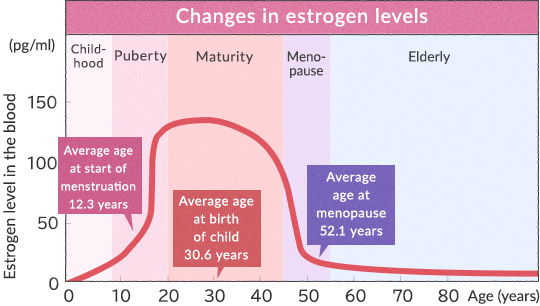 What is important to know? | Blog
What is important to know? | Blog
Climacteric syndrome (aka menopause) is a period in a woman’s life during which the work of the ovaries decreases and the amount of hormones they produce decreases. The main result of these physiological processes is the cessation of female reproductive function.
The period of menopause in most women occurs after 48-52 years. Its symptoms include hot flashes or sweating, as well as risks of developing serious illnesses. That is why menopause must be kept under control, visit a doctor regularly, and perform prescribed diagnostic procedures.
Stages and types of menopause
Menopause in women does not occur immediately. The climacteric period includes three main stages:
premenopause or premenopause. Menstruation does not stop, but ovarian function decreases. The stage lasts up to 2 years;
menopause. Caused by the cessation of menstruation. The beginning of the period is the absence of menstruation for 12 months. Usually occurs at 50-52 years;
Usually occurs at 50-52 years;
postmenopausal. This stage is characterized by a further decrease in female sex hormones until the complete cessation of the functioning of the ovaries.
The duration and timing of these stages are individual and depend on various factors, including the woman’s lifestyle and health status.
Menopause is also distinguished by the severity of manifestations:
first or mild degree. It is characterized by infrequent (up to 10 times a day) hot flashes, which are the main manifestation of menopausal syndrome;
second degree or medium. Symptoms are more pronounced, and hot flashes are not the only manifestation of this condition;
severe or third degree. Signs of menopause are strongly pronounced, not limited to hot flashes, the number and frequency of which is quite large (more than 20 times a day). Working capacity decreases, the general state of health worsens significantly.
Symptoms of menopause
The preliminary stage (before menopause) often occurs without obvious signs. But it also happens vice versa, when a woman is worried about not one, but several symptoms at once. In addition, manifestations can differ significantly in different periods of time.
But it also happens vice versa, when a woman is worried about not one, but several symptoms at once. In addition, manifestations can differ significantly in different periods of time.
Early signs of climacteric syndrome include:
hot flashes, goosebumps, sweating;
rapid pulse;
headaches;
pressure surges;
sudden changes in mood;
sleep problems;
memory impairment;
decreased sexual desire.
When menopause occurs, menstruation stops in women. Other signs during this period of the development of the syndrome include the following:
dry skin, as well as mucous membranes of the genital and urinary tract;
pain during sex;
urinary incontinence;
muscle and joint pain;
hair loss.
In the future, after menopause, various complications of menopause are possible:
hypertension;
atherosclerosis;
osteoporosis.
Also increases the risk of developing diabetes, hearing, vision and mental abilities are reduced.
In order to prevent these diseases and problems, during menopause, women are advised to regularly visit their doctor in Kyiv, monitor their health and adhere to the prescribed treatment.
Diagnostics of menopause
Diagnostic examinations of menopausal syndrome are carried out by gynecologists of our clinic. They examine and interview the patient, establish the relationship between menopause and various manifestations of menopause. An important diagnostic task is also the identification of concomitant diseases, such as hypertension, diabetes mellitus, etc.
During menopause, women may be prescribed various tests, including:
laboratory tests for hormones, lipid spectrum, coagulation;
cytological and microscopic: their aim is to exclude the presence of atypical cells in the cervix.
To exclude the development of complications of menopause, such types of studies as ultrasound of the pelvic organs, mammography, radiography of bone tissues, ECG are used.
Treatment of menopause
Menopause is a physiological process that occurs with age in any woman. Therefore, the therapeutic effect, as a rule, is aimed at minimizing negative manifestations, that is, facilitating the course of menopause. So with a mild degree of the syndrome, special treatment may not be required at all. In the presence of minor complaints about the general state of health appoint:
hormone replacement therapy;
vitamins, especially A, C and group B;
physiotherapy, including massage, exercise therapy, etc.
A balanced diet is also recommended during menopause.
With a large number of unpleasant manifestations (moderate severity of menopause), antidepressants and medications that allow normalization of blood pressure may be indicated.
If you are concerned about menopausal syndrome, please contact our clinic in Kyiv. Specialists will help women reduce symptoms during menopause, prescribe the necessary tests and offer preventive measures that will reduce the risk of various complications.
